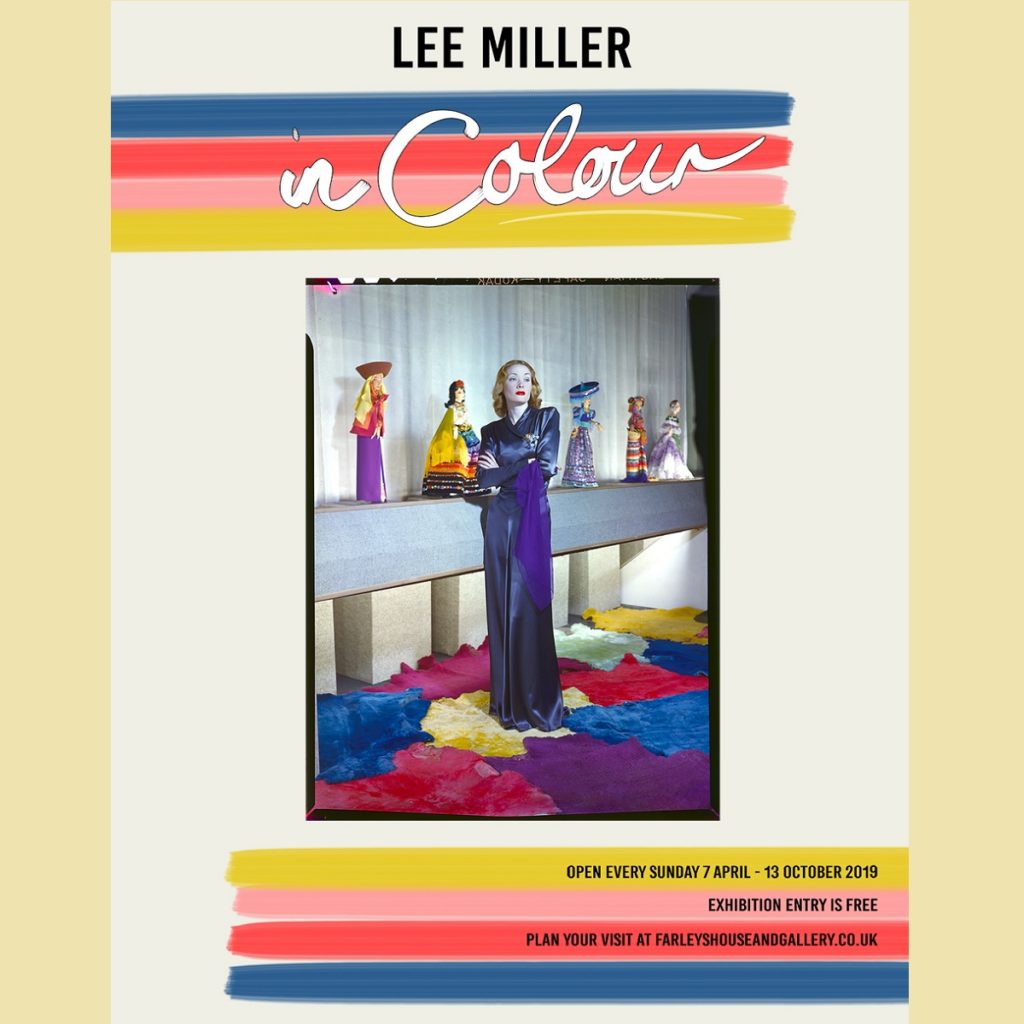The exhibition features her use of the Tri-Carbro process in her New York studio in 1933 before colour film was available. She endured many hours completing the slow and complex process necessary to create the perfect tricolour lithograph. As a surrealist in Paris, drawing on her experience from working with Man Ray and Edward Steichen she grew to value technical innovation as a way to capture the dreamlike images of the marvellous that form much of her surrealist work. Later she seized on the newly invented colour reversal film to capture scenes from her life in Egypt.
As one of the major photographers contributing to British Vogue during the Second World War, Lee Miller had access to large format colour film and her heavily saturated fashion shots often graced the magazine’s front cover. Later, keeping abreast of the curve, she used colour reversal to capture the likeness of some of the greatest modern artists such as; Joan Miró, Max Ernst, Dorothea Tanning, and Wilfredo Lam.





